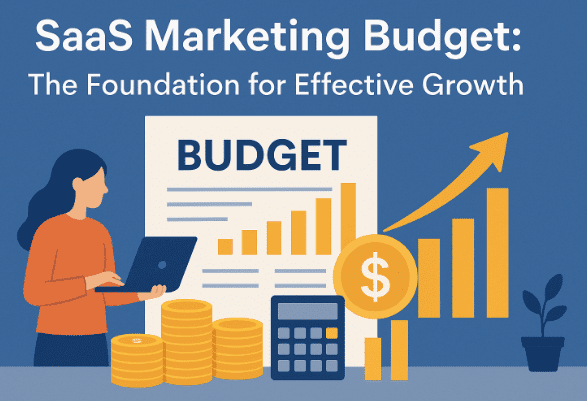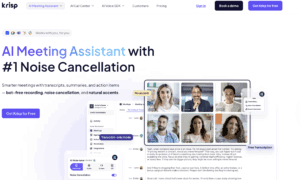SaaS Marketing Budget: The Foundation for Effective Growth
Marketing drives growth in the SaaS industry. SaaS businesses depend on visibility, customer trust, and data-driven decision-making. To achieve these, companies must set and manage a clear SaaS marketing budget. Without a precise plan, costs can spiral and campaigns lose direction.
Every SaaS company faces pressure to grow fast while using funds wisely. Many startups waste resources chasing broad goals or using outdated tactics. The right SaaS budget prevents waste, tracks performance, and encourages smarter investments.
Most teams struggle to define how much they should spend. Others wonder which channels work best for their model. These questions are common and important. This article explains how to build, manage, and refine your SaaS marketing budget. It gives you clear steps, explains common mistakes, and shows how to align your marketing with your company’s goals.
Understanding how to plan a budget for SaaS marketing is vital for companies of all sizes. Even with a small budget, you can compete with larger players by choosing the right priorities. Learn how to allocate funds, avoid costly errors, and stay agile as your business grows.
You will see practical advice here, not theory. We cover how to use real data to plan, spend, and adjust your budget. Let’s explore the essentials of a winning SaaS marketing budget.
Why Your SaaS Marketing Budget Matters
A SaaS marketing budget guides every decision your marketing team makes. It sets limits, creates priorities, and clarifies expectations. With a clear budget, teams work with purpose.
Budgets help prevent overspending. They make teams focus on high-impact channels and test new ideas without risking financial health. Budget marketing relies on tracking each dollar and learning what works.
SaaS businesses often move quickly. With so many tools and channels, costs can multiply. A clear SaaS budget lets you compare expected results with actual outcomes. This makes it easy to change direction if needed.
Investors and stakeholders want to see a plan. A structured SaaS marketing budget shows you can manage money and drive real growth. Without this proof, it is harder to secure new funding or build trust.
If you need proven tactics for lead generation and growth, explore these SaaS lead generation strategies.
How to Build an Effective SaaS Marketing Budget
Building a SaaS marketing budget starts with a clear review of your company’s stage and goals. Early-stage startups may spend more on brand awareness. Mature companies might invest more in customer retention or upselling.
First, gather all historic data. Review your spending, returns, and the actual cost of each marketing channel. Analyze this information with your team.
Now, decide on your main marketing goals. Do you want more leads, higher conversion rates, or lower churn? Set measurable targets for each goal.
Assign funds to each channel based on past results and potential. Examples include:
- Paid search and social ads
- Content marketing
- Email campaigns
- SEO improvements
- Events and webinars
Keep some budget flexible for new experiments. SaaS marketing changes quickly, so your budget must adapt. Review spending monthly and adjust as needed.
Key Components of a SaaS Marketing Budget
A solid SaaS marketing budget has clear categories. Each category needs its own funding and goals.
Common components include:
- Paid advertising: Spend on platforms like Google Ads, LinkedIn, or Facebook. Track every campaign’s ROI.
- Content creation: Fund blog articles, videos, and whitepapers. Content is a cost-effective tool for SaaS marketing.
- SEO tools and services: Invest in keyword research, site audits, and optimization software.
- Email marketing: Cover the cost of platforms and creative content.
- Events: Budget for trade shows, webinars, or virtual meetups.
- Brand development: Invest in design, messaging, and public relations.
- Analytics and reporting: Fund tools for tracking performance and analyzing data.
Leave a portion for testing new trends or tools. Innovation helps you stay ahead in SaaS marketing.
Common SaaS Budgeting Mistakes
Many SaaS companies repeat the same errors when planning their budgets. Avoiding these mistakes saves time and money.
Ignoring data: Rely on actual performance numbers, not guesses. Build your SaaS budget with real results in mind.
Overspending on single channels: Avoid placing all your funds in one place. Diversify to reduce risk.
No room for experiments: Always reserve part of your budget for new ideas or channels.
Forgetting existing customers: Retaining users is cheaper than acquiring new ones. Include upsell and retention activities in your SaaS marketing plan.
Lack of regular review: Update your budget every month or quarter. Make changes as results shift.
How to Align Your SaaS Budget with Company Goals
Successful SaaS marketing starts with alignment. Your SaaS budget must reflect your company’s main objectives.
Work with leadership to set clear targets. Link every dollar spent to a measurable outcome, like leads, conversions, or product signups.
If your business wants fast growth, place more funds in lead generation and top-of-funnel campaigns. If you need to increase lifetime value, shift funds to customer success and loyalty programs.
Regularly share progress and results with stakeholders. This keeps your team focused and confident.
For professional support on aligning your goals and campaigns, consider working with a team like Right Left Agency.
Practical Steps for Managing Your SaaS Marketing Budget
Managing your budget is an ongoing process. Follow these steps for strong results:
- Set clear goals: Start with concrete numbers—traffic, leads, conversions, or revenue targets.
- Break down costs: List all expected expenses by channel and campaign.
- Assign ownership: Give each budget area a manager who tracks results and adjusts spending.
- Review often: Hold monthly reviews. Compare planned versus actual spending.
- Test and learn: Use part of your SaaS budget for small tests. Double down on winners.
- Document changes: Keep a record of every budget change and the reasons for each shift.
These steps create a feedback loop. Each cycle improves your SaaS marketing results.
How Much Should You Spend on SaaS Marketing?
There is no single answer, but research offers guidance. Most SaaS companies spend between 15% and 40% of annual revenue on marketing. Startups may spend even more in early growth phases.
Choose a percentage that matches your risk tolerance and market stage.
Set minimum and maximum amounts for each channel. Track your SaaS budget closely and be ready to adjust.
If you are new to SaaS marketing, start small. Increase your budget as you find channels that deliver reliable results.
The Role of Data in SaaS Budget Marketing
Data guides every part of your SaaS marketing budget. Use clear metrics like CAC (Customer Acquisition Cost), LTV (Lifetime Value), and conversion rates.
Collect data from all channels. Use dashboards to spot trends and weak points.
Adjust your SaaS budget based on results. Shift funds to high-performing areas. Cut losses quickly.
Data-driven marketing is essential in SaaS. It allows you to scale fast and avoid waste.
SaaS Budget Allocation: Best Practices
To get the most from your SaaS budget, follow these best practices:
- Keep your budget agile. Review and update it often.
- Track every expense, even small ones.
- Prioritize high-impact channels.
- Use automation to save time and reduce errors.
- Invest in training and tools for your team.
A strong SaaS marketing budget supports growth. It keeps your business prepared for changes and challenges.
How to Forecast ROI in SaaS Marketing
Forecasting helps you predict future results. Use past data to set benchmarks for your SaaS marketing budget.
Estimate returns for each channel. Compare expected results to actual performance each month.
This process shows what works. It helps you avoid repeated mistakes and chase only the best opportunities.
Use simple spreadsheets or dedicated tools for forecasting. Update them regularly for accuracy.
SaaS Marketing Budget for Startups vs. Established Companies
Startups need fast growth, so they often take bigger risks. They might spend more on paid ads and lead generation.
Established SaaS companies focus on long-term value. They shift budgets to customer retention, upselling, and new features.
Both types of businesses must track spending and results closely. Your SaaS budget should match your company’s stage and main priorities.
Mistakes to Avoid When Cutting Your SaaS Budget
Sometimes, companies must cut spending. If you need to reduce your SaaS marketing budget, avoid these mistakes:
- Do not cut all experimental funds. Testing is still important.
- Keep basic analytics and reporting tools active.
- Avoid stopping all content creation. Organic traffic supports long-term growth.
- Do not ignore your existing customers. Retention matters most when funds are tight.
Smart cuts protect your growth potential.
Tools for Managing Your SaaS Marketing Budget
Many SaaS teams use tools to plan and track budgets. Look for software that offers:
- Simple dashboards
- Integration with ad platforms and analytics tools
- Automatic alerts for overspending
- Customizable reports
Popular options include spreadsheets, dedicated budgeting tools, and all-in-one SaaS management platforms.
The right tool depends on your team size and needs.
Aligning Sales and Marketing Budgets in SaaS
Sales and marketing teams must work together. Aligning their budgets creates a better customer journey.
Hold regular meetings. Share goals and updates. Track the full funnel, from awareness to conversion.
A joined approach makes every dollar in your SaaS marketing budget go further.
Conclusion: Strong SaaS Marketing Budgets Lead to Growth
A precise SaaS marketing budget drives better decisions. It helps you invest with confidence, track your progress, and adapt quickly.
Set goals, use data, and review your budget often. Avoid common mistakes. Support both new and existing customers.
Success in SaaS comes from smart spending. Build your SaaS budget on clear numbers and priorities. Refine your process every month.
By following these steps, your SaaS marketing will grow stronger, your ROI will improve, and your company will reach its goals faster.



































